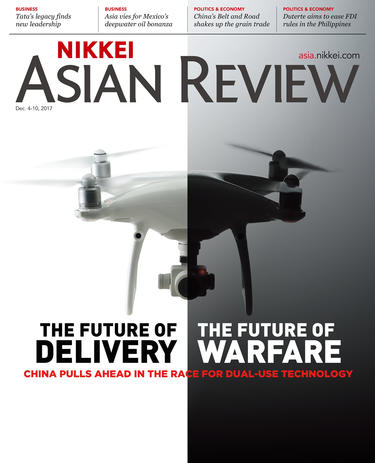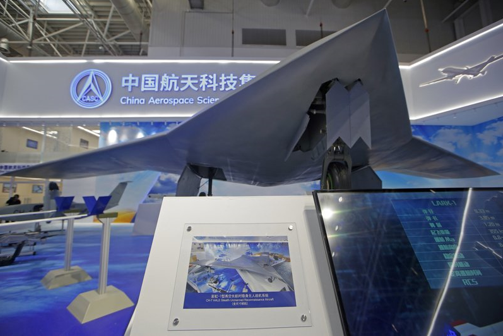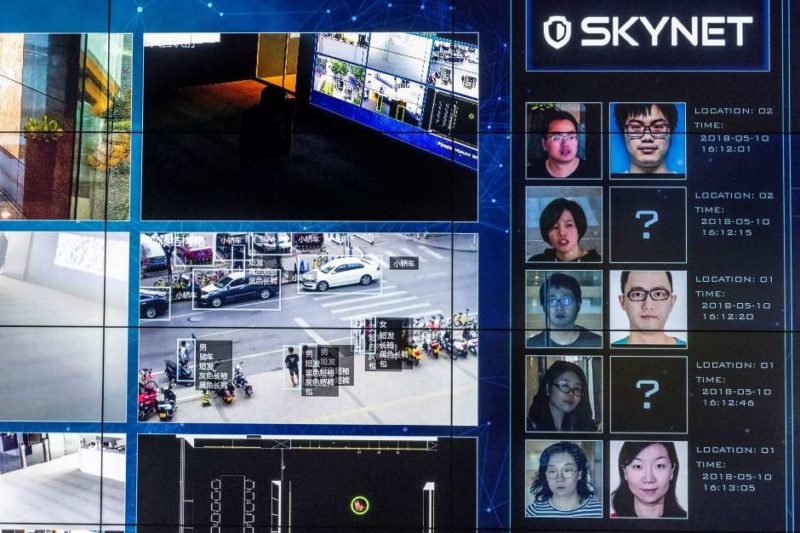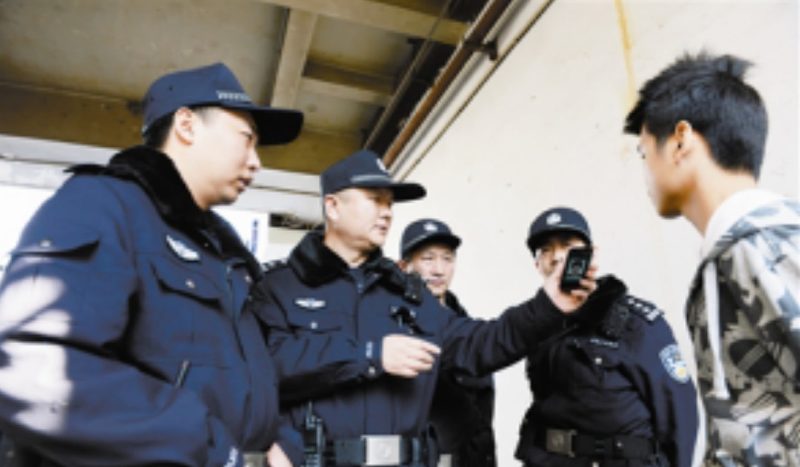AI used by the Chinese government
“The dividend of government policies is a key factor behind China’s AI development.”
Baidu co-founder and CEO Robin Li was quoted saying at the 2018 Baidu World Technology Conference in Beijing.
One of the Chinese government’s greatest ambitions, with the Communist Party at the forefront, is to make China the world leader in artificial intelligence and the world’s first innovation center by 2030. As stated in a previous article on AI by Daxue Consulting, the Chinese government established the Next Generation Artificial Intelligence Development Plan (AIDP) in 2017. The financial resources dedicated to this new plan are equal to China’s ambition: $22 million per year, a sum that contributes to a budget that should reach $59 million by 2025.
China’s AI development plan prioritizes research and innovation in applications of AI in the Chinese military and defense industry, as well as insecurity and surveillance. The aim is to become the world’s first innovation center by 2030, and the country certainly has a chance to win the AI race against the US.
AI used by the Chinese government: tech companies at the party’s orders
China’s AI development: Champions at the forefront of innovation
In 2018, the Chinese government took a major step forward in China’s AI development plan by announcing that China’s technology giants Baidu, Alibaba and Tencent (BAT) along with leading facial recognition companies Flytek and SenseTime, officially became China’s “AI Champions.” This new position benefits technology companies by ensuring them a position at the forefront of the innovation race, freeing them of the competitive threat of state-owned enterprises. However, collaboration with the government on national security and military applications of AI in China is the price to pay for this strategic position.
The Chinese government has specifically entrusted certain tasks to the local technology giants to achieve its Development Plan. Alibaba Cloud must dedicate its research in AI for Smart Cities, Baidu in the sector of autonomous vehicles, Tencent in medical imaging, and iFlytek in voice recognition. The Chinese government has also set up a Strategic Advisory Committee made up of leading technology universities, the top AI experts in Chinese technology start-ups and “AI Champions.” The “Made in China 2025” plan is another essential plan, which aims to increase China’s autonomy in AI, and reveals how it has become a national priority for the Chinese government.

Public and private: dual use of AI technologies in China
The use of AI in China essentially implies a dual-use factor: both actors from the public – the Chinese government- and private sector benefit from the synergies of the interdependence relation. For example, the same technology that powers autonomous vehicles can be used in commercial vehicles in the same way as in military AI-enabled drones in China. On the other hand, the company that specializes in natural language analysis and automatic translation, YaTrans, collaborates with the Chinese government on counter-espionage by making its NiuTrans system available to the Ministry of State Security. Similarly, computer vision is widely used in facial recognition in China for commercial purposes and is also used for military applications, including automated image analysis.
There is then a military-civil fusion approach elevated to the level of “national strategy” that allows China to transfer dual-use technological advances. The government promotes resource sharing and institutionalizes links between the People’s Liberation Army, the defense industry, the private sector, and universities.

AI innovation in China needs for data
In addition, AI technology works based on an enormous amount of data. China is the country with the most potential for AI development, mainly because of its wealth of data to train AI systems. China is on track to have 20% of the world’s data by 2020 and 30% by 2030.
With fewer obstacles to data collection and dissemination, China is accumulating an unprecedented database. With increasingly powerful computers, new algorithms, and an extensive database, China becomes the country with the most advantages to lead the development in machine intelligence. The 800 million Chinese Internet users and 700 million smartphone users are the keys to China’s AI development.
AI security systems in China allowing the government access to data
To obtain such amounts of data from the Chinese population, in 2017 the Chinese government enacted a law on personal data and cybersecurity requiring all companies, both domestic and foreign, to make all data collected from users available to the government.

Data allows the Chinese authorities to know and track the population: location, customs, political opinions, affinities, sociability. Similarly, it feeds the AI algorithms that will be able to refine their precision in facial and voice recognition, and in identifying suspicious behavior. In turn, as AI technology is largely owned by private companies, commercializing it in the market is always an option, or at least is what the authorities say.
Article 7 of China’s National Intelligence Law gives the Chinese government the authority to obtain any assistance and cooperation from tech companies to Chinese military and security services. The Chinese government is increasing the pressure on technology companies, subjecting them to intense scrutiny. According to press reports, companies have noticed a growing pressure to fall in line with Beijing’s mandates during 2018.
Likewise, public and private sectors are united in a close relationship of dependence: the needs of the Chinese government in security and military direct the R&D investment in tech companies. The latter can develop AI devices thanks to the entry of vast amounts of data, partly made available by the Chinese state.
Military applications of AI in China: the advent of unmanned wars
Development of AI in the Chinese military is a state priority
The Chinese government’s AI development plan (AIDP) strategy states that the country will promote all kinds of research to lead innovation in national defense. The Chinese People’s Liberation Army (PLA) sees the transformation of today’s informative ways of warfare into future intelligentized warfare a source of national advantage for China. AI in the Chinese is a priority, and this strategic vision makes it easier for the PLA to achieve its desired capabilities by using breakthrough AI technology from the private sector. China’s state-owned enterprises dominate its defense industrial base, which Jane’s – a journal specialized on global defense industry- rates as the most advanced in the Asia-Pacific region.
According to the official PLA, dictionary defines an “artificial intelligence weapon” as: “a weapon that uses artificial intelligence to automatically pursue, distinguish and destroy enemy targets; it is often composed of information gathering and management systems, knowledge base systems, assistance to decision-making systems, mission implementation systems, etc.”.
Today, the PLA funds a wide variety of AI projects, and the Chinese defense industry collaborates with many private tech companies in an extensive R&D program. Among other military applications, the PLA hopes to improve its future capabilities by leveraging AI to create intelligent and autonomous unmanned systems, intelligent support in command decision-making, data fusion, and information processing. Without wishing to establish an exhaustive list, the following are an example of military applications of AI in China.

Autonomous weapons in China: Unmanned Aerial Vehicles (UAVs)
Unmanned aerial vehicles (UAVs), also known as drones, are intelligent autonomous weapons with AI-integration. The intelligent drones in China are mainly used by the military, as it is supposedly forbidden for commercial use. Thanks to the speed and accuracy of identifying potential threats and transmitting information to military bases, the use of UAVs reinforces military efficiency. No need for pilots, drones can attack remotely by pressing a single button from the operation center.
During the 12th China International Aviation and Aerospace Exhibition in November 2018, China presented its latest stealth combat drone model. Conceived by a state-owned company, the CH-7 is a UAV the length of a tennis court with a 22-meter (72-feet) wingspan. In addition, also shown at the exhibition was the TYW-1 is a high-altitude, high-strength UAV used by PLA Navy (PLAN) and PLA Air Force (PLAAF) primarily for reconnaissance.
The Chinese defense industry is beginning to incorporate higher levels of autonomy into its UAVs: it can operate with a high degree of automation, taking off and landing independently and involving minimal human intervention in tracking and attacking targets thanks to the weapons incorporated.

Unmanned Surface Vessel (USV)
Last year, the state-owned China Shipbuilding Industry Company (CSIC) launched it’s Marine Lizard, which is not a UAV, but an autonomous amphibious landing vehicle, a type of USV. The vehicle can be used for protection in an amphibious assault force, providing anti-aircraft support with armaments and avoiding an obstacle, and its weapons are controlled remotely.
Military Command decision-making in China
Another field where the PLA is expanding military intelligence in China is on military command decision-making, that takes advantage of the potential of AI, as well as big data, cloud computing, and machine learning. Leveraging AI in improving military capabilities in command decision-making introduces a uniqueness on the battlefield, where human cognition will no longer be able to keep pace with AI in future wars. AI technology supports commanders’ decision-making on the battlefield through advanced prediction, option, and impact assessment capabilities. The PLA is leveraging AI technology to “enhance” decision-making of fighter pilots or commanders of submarines.
AI and Cybersecurity in China
Military computer systems are vulnerable to cyberattacks, which can result in the loss of classified military information and damage to military capabilities. However, AI-equipped systems can autonomously protect networks, computers, programs, and data from unauthorized access. In addition, these AI security systems in China can anticipate cyberattacks by logging patterns, allowing counter-attack tools to be developed to deal with them.
Current research of military applications of AI in China
The PLA is working in partnership with many academic institutions and AI expert companies for the support of the dual-use of AI in China and military research. Hoover Institution makes an extended description of current research projects in AI in the Chinese military:
- Using AI-enabled image processing and target recognition technologies to detect ships in satellite imagery.
- Using machine and deep learning for the analysis of underwater acoustic signals.
- Implementing an AI decision-support system on nuclear submarines.
AI used by the Chinese government in surveillance and security
“I look forward to a world in which AI will make it impossible to commit a crime without being caught”
A scholar at a Chinese think tank told the Center for a New American Security.
Video surveillance AI-technology in China
Hikvision, owned by the China Electronics Technology Group Corporation’s (CETC) 52nd Research Institute, has pursued collaboration with the PLA to provide its AI-enabled video surveillance technology for national defense and security purposes in China.

Facial recognition in China: tech companies working for the state
Face++, Megvii’s powerful AI-enabled devices
Technology start-up Megvii was founded by the Chinese government to collaborate with the police in security and law enforcement. Its Face++ facial recognition device is designed to find criminals, detecting faces by analyzing data with facial points, and confirming the identity of the person with extreme precision. The system is powered by data provided by the government: China has a pervasive surveillance network with 170 million security cameras in its Skynet system and 400 million more in the pipeline. Moreover, Face++ is an open platform where any developer can create their own app, contributing to data sharing. Face++ becomes the most extensive facial recognition platform in the world, with more than 300 thousand developers from 150 countries using it.

Isvision
China is building the world’s most powerful facial recognition system, ambitioning to identify any of its 1.3 billion inhabitants in less than three seconds. The system is being developed since 2015 by Isvision, a Shanghai security company, in collaboration with the Chinese Ministry of Public Security. The system is connected to the police and their database of suspicious citizens, allowing them to be recognized and tracked. Isvision AI-powered facial recognition devices have already been installed in some important squares in Beijing, and in Xinjiang and Tibet, where certain “ethnic conflicts” persist.

SenseNets
SenseNets was established by video surveillance company NetPosa Technologies and AI start-up SenseTime in 2015. SenseNets is also part of the government’s Skynet project, the national system for fighting crime and preventing potential disasters in China. It specializes in three types of systems: facial recognition, to identify potential suspects and fight terrorism; crowd analysis that facilitates and accelerates decision-making; and human verification to compare facial images with ID card identity photos.
LL-vision
In March 2018, local police in Beijing tested a new surveillance device: smart glasses with facial recognition and car plate identification, that then match the data in real-time with a suspects’ database, or a “blacklist,” according to Reuters. The AI-powered glasses are manufactured by the AI start-up LLVision, that collaborates with the government on security matters, or as LLVision CEO Wu Fei says, in “noble causes” (Reuters).

China’s success in artificial intelligence brings economic growth to the country through investment and talent as well as the development of economies of scale. There is a boom in the number of AI companies and start-ups in China, innovating relentlessly, and widely selling its technology across many industries (Know more about the AI landscape in China in Daxue Consulting).
While most of the AI companies in China collaborate with the government within the dual-use strategy, some of them are selling military and security technology abroad. For example, DJI, the Chinese company world leader in consumer drones, was selected as the sole drone provider to the New York Police Department. Moreover, China has become the primary exporter of UAVs with clients in the Middle East, such as Egypt, Iraq, Saudi Arabia, and the UAE. Ziyan UAV’s attack helicopter drone Blowfish A2 is gaining increasing interest in the Middle East.
China doesn’t seem to want to slow down the development of lethal autonomous weapons. However, there have been concerns from within the Chinese government to avoid an AI arms race, and Alibaba’s chairman said that new technology such as artificial intelligence could lead to World War III.
Despite these concerns, China’s leadership is continuously pursuing global AI dominance and its use in the military and surveillance.
Author: Ines Beneyto Brunet
Our AI in China White Paper is available to anyone looking to learn more about the role of artificial intelligence in Chinese industries.





